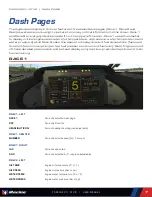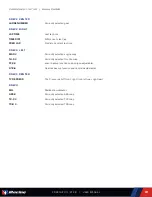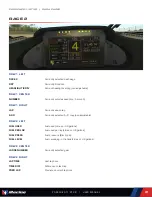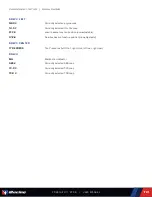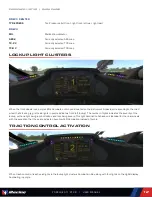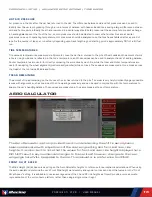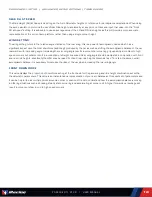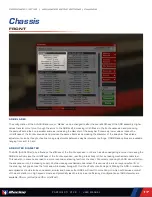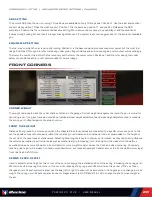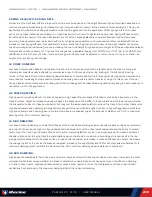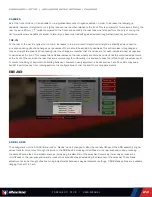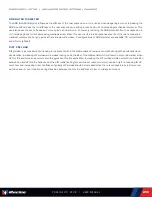
21
PORSCHE 911 GT3 R | USER MANUAL
SPRING SELECTED/SPRING RATE
This setting determines the installed corner spring stiffness. Stiffer springs will result in a smaller variance in ride height between
high and low load cases and will produce superior aerodynamic performance through improved platform control; however, they
will also result in increased tire load variation which will manifest as a loss in mechanical grip. Typically the drawbacks of stiffer
springs will become more pronounced on rougher tracks and softer springs in these situations will result in increased overall
performance. Corner spring changes will influence both roll and pitch control of the platform and ARB changes should be
considered when altering corner spring stiffnesses in order to retain the same front to rear roll stiffness and overall balance.
When reducing corner spring stiffness the ARB stiffness (either via blade or diameter depending on the size of the corner spring
change) should be increased to retain the same roll stiffness as previously. 11 options for spring rate are available ranging from
200 N/mm (1371 lbs/in) to 400 N/mm (2286 lbs/in) in 20 N/mm (114 lbs/in) steps. Spring perch offsets must be adjusted
to return the car to the prior static ride heights after any spring rate change.
LS COMP DAMPING
Low speed compression affects how resistant the shock is to compresion (reduction in length) when the shock is moving at
relatively low speeds, usually in chassis movements as a result of driver input (steering, braking, & throttle) and cornering
forces. In this case -24 is minimum damping (least resistance to compression) while 0 is maximum damping (most resistance to
compression). Increasing the low speed compression damping will result in a faster transfer of weight to this corner of the car
during transient movements such as braking and direction change with increased damping usually providing an increase in turn-in
response but a reduction in overall grip in the context of front dampers.
HS COMP DAMPING
High speed compression affects the shock’s behavior in high speed travel, usually attributed to curb strikes and bumps in the
track’s surface. Higher compression values will cause the suspension to be stiffer in these situations, while lower values will allow
the suspension to absorb these bumps better but may hurt the aerodynamic platform around the track. At smoother tracks more
high speed compression damping will typically increase performance while at rougher tracks or ones with aggressive kerbs less
high speed compression damping can result in an increase in mechanical grip at the expense of platform control. 0 is maximum
damping while -24 is minimum damping.
LS RBD DAMPING
Low speed rebound damping controls the stiffness of the shock while extending at lower speeds, typically during body movement
as a result of driver inputs. Higher rebound values will resist expansion of the shock, lower values will allow the shock to extend
faster. Higher rebound values can better control aerodynamic attitude but can result in the wheel being unloaded when the
suspension can’t expand enough to maintain proper contact with the track. When tuning for handling, higher front low speed
rebound can increase on-throttle mechanical understeer (but reduce nose lift) while lower values will maintain front end grip
longer, helping to reduce understeer, but will allow more splitter lift. Excessive front rebound can lead to unwanted oscillations due
to the wheel bouncing off of the track surface instead of staying in contact. 0 is maximum damping (most resistant to extension)
while -24 is minimum damping (least resistance to extension).
HS RBD DAMPING :
High-speed rebound adjusts the shock in extension over bumps and curb strikes. Higher values will reduce how quickly the shock
will expand, while lower values will allow the shock to extend more easily. Despite not having as much of an effect on handling
in result to driver inputs, High-speed rebound can produce similar results in terms of aerodynamic control and uncontrolled
oscillations if set improperly. 0 is maximum damping while -24 is minimum damping.
PORSCHE 911 GT3 R | ADVANCED SETUP OPTIONS | CHASSIS

